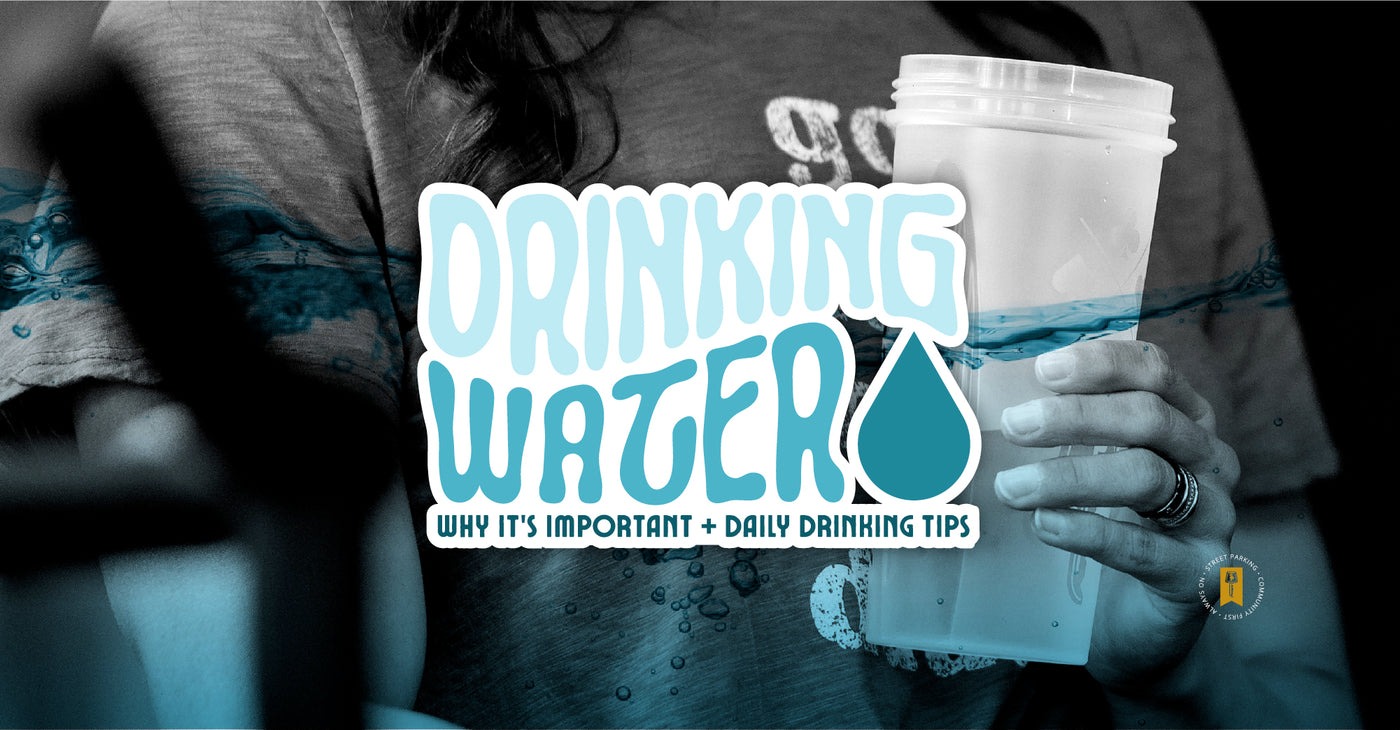
Water.
Your body and brain are largely made up of it.
You’ll die if you don’t drink it.
You need to drink it everyday.
We all know we’re supposed to drink water...but have you ever thought about WHY you’re supposed to drink it? Or how much of it you’re supposed to drink? And ultimately, how to make it more of a daily habit?
Water helps regulate your body temperature, process fat, digest foods, and acts as nature’s most powerful detox for your body. It’s also needed to lubricate and cushion your joints and muscles. Not to mention assists with oxygen flow.
The physical benefits should not be understated.
Additionally….
Those who drink enough water are less likely to experience depression and anxiety.
When we are properly hydrated our body is better able to regulate. This homeostasis calms tension in your brain, which results in keeping anxiety at bay.
On the flip side, even minor levels of dehydration can result in irritability of the brain/body. This can lead to anxiety and if left unmanaged… depression.
This is how the simple act of drinking a sufficient amount of water each day may lower your chances of experiencing depression and anxiety. And at the very least will improve energy and mood.

How much water should you be drinking per day?
You have probably experienced a lot of conflicting views on this topic.
And the reason for that is that sufficient water intake recommendations are dependent on multiple factors such as: location, temperature, climate, weight, body composition, gender, age, activity level and so on.
One recommendation from the U.S. National Academies of Sciences, Engineering, and Medicine is:
- Men drink 15.5 cups (124 ounces) of water per day
- Women drink 11.5 cups (92 ounces) of water per day
That recommendation includes water, other beverages consumed, and foods that contain water in them.
At Street Parking we keep it simple and recommend that our members set a goal of drinking 50% of their body weight of water per day (in ounces), until it becomes a habit.
Examples:
- A 200lb male x 50% bodyweight = 100 oz water per day
- A 140lb female x 50% bodyweight = 70 oz water per day
Keep in mind, there is no “exact” number of ounces anyone can recommend to you due to the multiple factors at play. The first step might be to simply drink 1-2 glasses more than you drink right now. Work your way up from there until you hit that 50% mark.

Daily drinking tips
Depending on where you’re starting from - because let’s be honest, some of you hate the taste of water - start small and work your way up to the goal.
- Buy a 21 oz water bottle and calculate how many fill ups you need per day (based on 50% bodyweight in ounces)
- Buy a large, 40 oz water bottle and calculate how many fill ups you need per day (based on 50% bodyweight in ounces)
- Always have water bottles and water easily accessible
- Keep a full water bottle in your trunk
- Have a dedicated water bottle that’s accessible while you drive
- Have a dedicated work water bottle
- Keep one in your bathroom and/or next to your bed for early morning hydrating
- Always take a swig of water before you eat your next bite or take that next sip of coffee
- Drink a full glass of water first thing after waking up in the morning or while your coffee is brewing
- Make a glass of water a “buy in” for your second cup of coffee.
- If you hate the taste of water, flavor it with electrolytes, lemon, fruit, etc.
- Set an alarm on your phone or watch to remind yourself to take a drink of water every 30 minutes
Keeping it simple with some of these intentional tips can be the difference between knowing that you ‘should’ be drinking more water and finally turning it into a daily habit.
Interested in learning more about simple tips and habits for taking control of your health and fitness? Check out the Street Parking Coaches’ Roundtable discussions on: “7 Ways to Control Your Fitness” and “Street Parking Nutrition.”
The writing of this blog was in collaboration with Dr. Rachel Young, a Licensed Clinical Social Worker in Ohio. She is utilizing training information from various sources.


